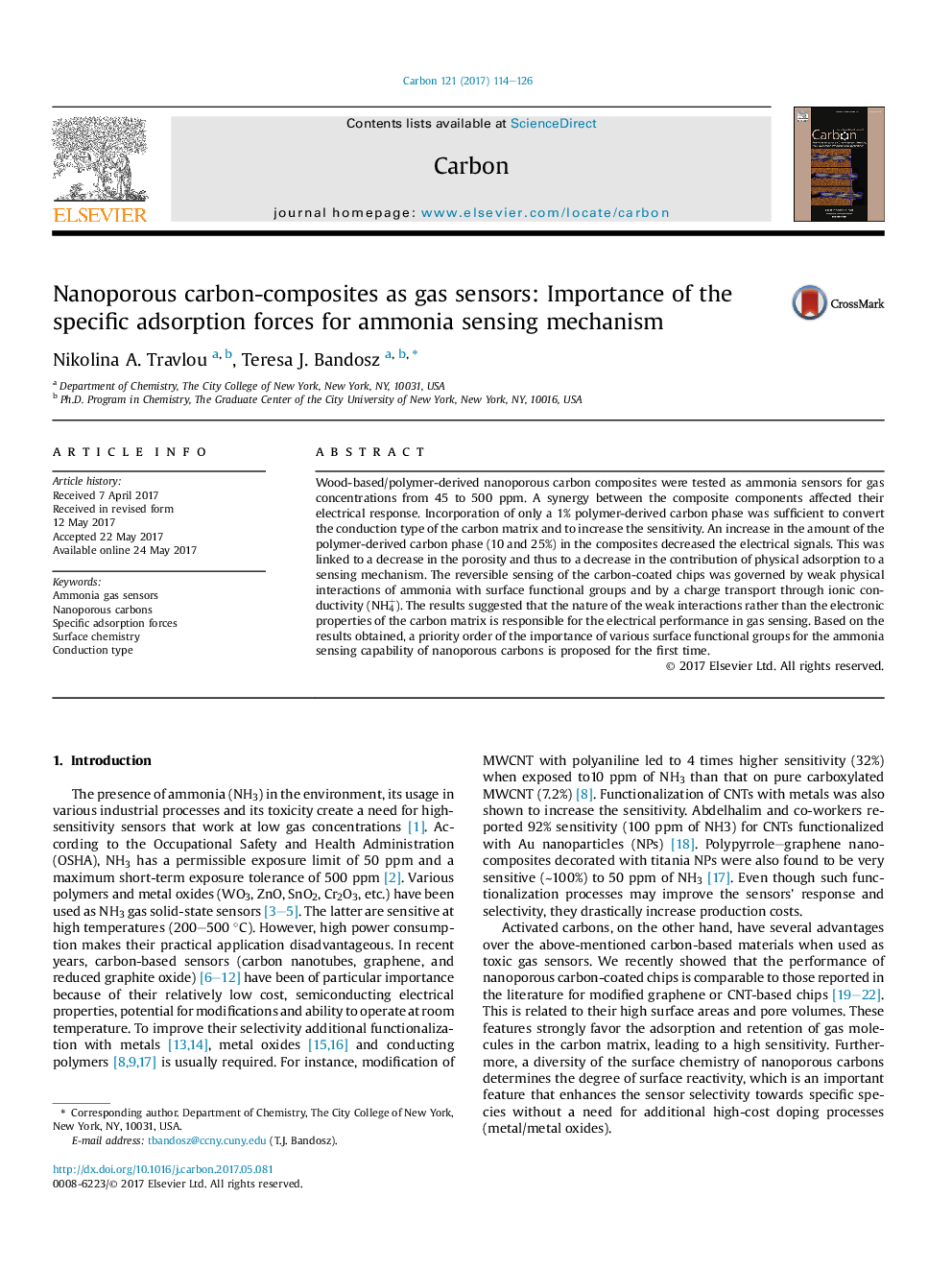| Article ID | Journal | Published Year | Pages | File Type |
|---|---|---|---|---|
| 5431846 | Carbon | 2017 | 13 Pages |
Wood-based/polymer-derived nanoporous carbon composites were tested as ammonia sensors for gas concentrations from 45 to 500Â ppm. A synergy between the composite components affected their electrical response. Incorporation of only a 1% polymer-derived carbon phase was sufficient to convert the conduction type of the carbon matrix and to increase the sensitivity. An increase in the amount of the polymer-derived carbon phase (10 and 25%) in the composites decreased the electrical signals. This was linked to a decrease in the porosity and thus to a decrease in the contribution of physical adsorption to a sensing mechanism. The reversible sensing of the carbon-coated chips was governed by weak physical interactions of ammonia with surface functional groups and by a charge transport through ionic conductivity (NH4+). The results suggested that the nature of the weak interactions rather than the electronic properties of the carbon matrix is responsible for the electrical performance in gas sensing. Based on the results obtained, a priority order of the importance of various surface functional groups for the ammonia sensing capability of nanoporous carbons is proposed for the first time.
Graphical abstractDownload high-res image (353KB)Download full-size image
